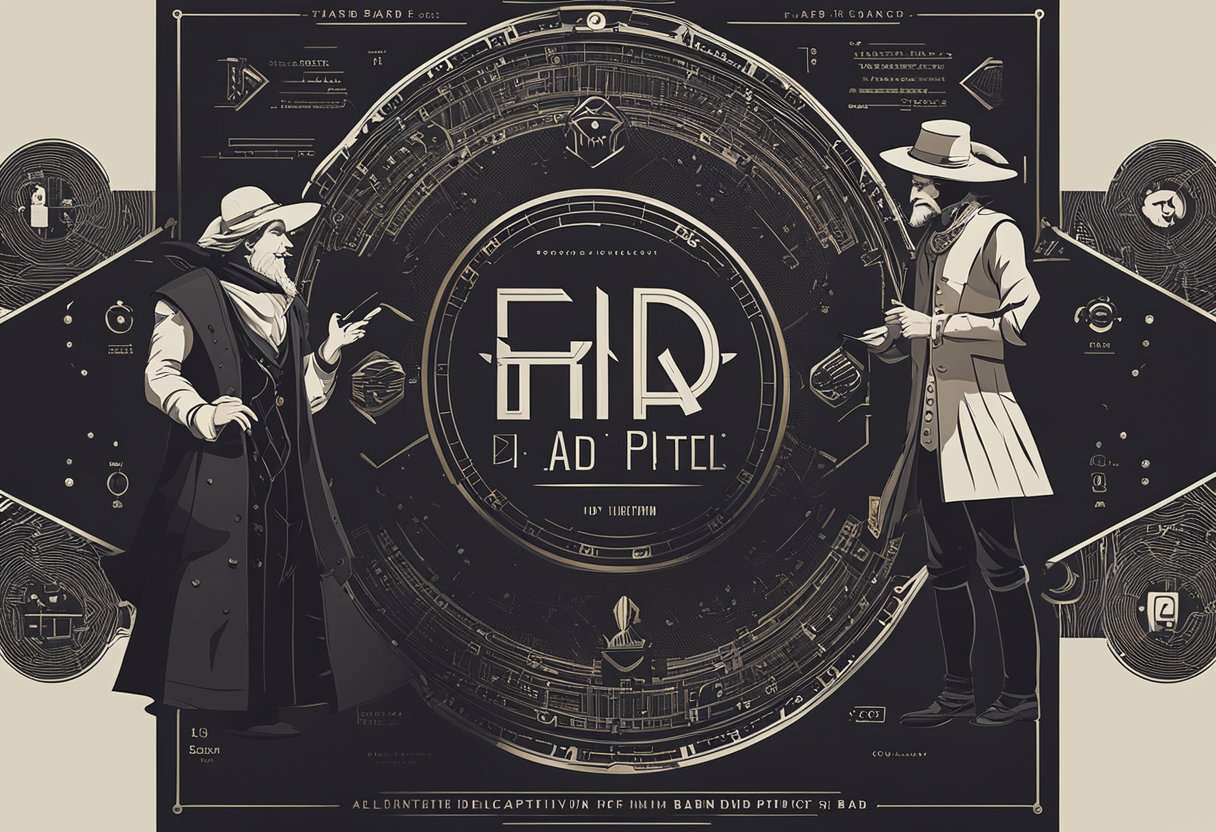Bard vs ChatGPT for Coding: Which AI Model is the Best Alternative to OpenAI?
Artificial intelligence (AI) has become a powerful tool in many industries, and its ability to generate text has made it particularly useful in content creation. OpenAI's natural language processing (NLP) model, GPT-3, has been at the forefront of this innovation. However, its pricing model has limited its accessibility to many developers and businesses. As a result, developers have been exploring alternatives to OpenAI, with Google's Bard emerging as a strong contender.

Comparing Bard and ChatGPT for coding, one notable difference is their underlying NLP models. ChatGPT uses the Generative Pre-trained Transformer 4 (GPT-4), while Bard uses the Language Model for Dialogue Applications (LaMDA). Both models have similar capabilities in generating human-like responses to text-based inputs. However, Bard stands out with its integration with Google Search, providing access to real-time information, while ChatGPT relies on its curated knowledge base.
For those seeking free alternatives to OpenAI, Bard's API pricing model offers a more affordable option. Developers can use the Bard API for free for up to 10,000 requests per month, with additional requests costing $2 per 1,000 requests. This pricing model makes it more accessible to businesses and individuals who may not have the budget for OpenAI's expensive pricing tiers. Additionally, there are other free AI models available that can be fine-tuned for specific use cases, such as Hugging Face's Transformers and EleutherAI's GPT-Neo.
Key Takeaways
- Bard and ChatGPT have similar capabilities in generating text, but Bard offers integration with Google Search while ChatGPT relies on its curated knowledge base.
- Bard's API pricing model provides a more affordable alternative to OpenAI for developers and businesses.
- Free AI models such as Hugging Face's Transformers and EleutherAI's GPT-Neo can be fine-tuned for specific use cases, providing additional options for those seeking OpenAI alternatives.
Comparing Bard and ChatGPT for Coding

When it comes to AI chatbots for coding, two major players have emerged: Google's Bard and OpenAI's ChatGPT. Both chatbots have their own unique features and capabilities, making it difficult to determine which one is better.
One of the main differences between Bard and ChatGPT is the technology they use. ChatGPT uses the Generative Pre-trained Transformer 4 (GPT-4), while Bard uses the Language Model for Dialogue Applications (LaMDA). Both technologies are powerful tools for generating text and answering questions using natural language processing (NLP).
In terms of programming language support, both chatbots offer a wide range of options. ChatGPT supports popular programming languages such as Python, JavaScript, Java, C#, Rust, and Go. Bard, on the other hand, offers integration with Google Search, providing access to real-time information.
When it comes to pricing, OpenAI's ChatGPT is a paid service, while Google's Bard is free to use. However, there are free alternatives to OpenAI that can be used as an OpenAI Playground alternative.
Overall, both Bard and ChatGPT are user-friendly and can be used to create content or answer questions. However, the decision between the two ultimately depends on the specific needs of the user.
OpenAI and Bard API Pricing Models

Bard API Cost
Bard API is a natural language processing tool developed by Google that allows developers to create chatbots, provide answers to questions, and generate text. The pricing model for Bard API is based on the number of requests made per month. The cost per request is $0.0075. This pricing model is flexible and can be adjusted according to the user's needs. Bard API also offers a free tier that allows developers to make up to 10,000 requests per month.
Free Alternatives to OpenAI
OpenAI is a powerful tool for machine learning and content creation, but it can be expensive for some users. Fortunately, there are free alternatives to OpenAI that provide similar functionality. One such alternative is GPT-Neo, an open-source project developed by EleutherAI. GPT-Neo is a fine-tuned version of the GPT-3 model that can generate text, answer questions, and perform natural language processing tasks.
Another free alternative to OpenAI is Hugging Face, a platform that provides access to a wide range of pre-trained AI models. Hugging Face allows users to create chatbots, answer questions, and perform natural language processing tasks. Hugging Face also offers a free API that can be used to integrate the platform into other applications.
For users who are looking for a free alternative to OpenAI that is user-friendly and easy to use, Google Sheets can be a great option. Google Sheets provides a simple interface that allows users to create chatbots, generate text, and perform natural language processing tasks. Google Sheets also integrates with Google's AI platform, making it easy to create custom models for specific use cases.
In conclusion, while OpenAI is a powerful tool for machine learning and content creation, there are free alternatives available that provide similar functionality. Bard API is a cost-effective option for users who need a reliable natural language processing tool, while GPT-Neo, Hugging Face, and Google Sheets offer free alternatives that are easy to use and provide a wide range of functionality.
Evaluating OpenAI Alternatives

OpenAI has undoubtedly been a powerful tool for generating text and answering questions using natural language processing (NLP). However, with the recent changes in OpenAI's pricing model, many users are looking for alternatives. In this section, we will evaluate some of the most popular OpenAI alternatives available today.
Google OpenAI Alternative
One of the most popular alternatives to OpenAI is Google's language model for dialogue applications, also known as Bard. Bard is a machine learning model that is fine-tuned for generating text in response to user queries. It is also user-friendly and can be easily integrated with Google Sheets and other Google services.
While Bard is not a direct competitor to OpenAI's GPT-3 model, it is still a powerful tool for content creation and answering questions. Users can easily create content for social media, blogs, and other platforms using Bard's pre-trained models. Additionally, Bard's API pricing is more affordable than OpenAI's, making it a great alternative for users on a budget.
AI Platforms Like OpenAI
Another alternative to OpenAI is to use an AI platform that offers similar functionality. There are several AI platforms available that offer pre-trained models for natural language processing, machine learning, and other tasks. Some of the most popular platforms include IBM Watson, Microsoft Azure, and Amazon Web Services.
These platforms offer a wide range of tools and services for developers and businesses looking to incorporate AI into their workflows. They also offer flexible pricing models, making them a great alternative to OpenAI for users with different budgets.
Free AI Like OpenAI
For users looking for a free alternative to OpenAI, there are several options available. One of the most popular is Hugging Face, an open-source library that offers pre-trained models for natural language processing and other tasks. Hugging Face's models are fine-tuned and offer similar functionality to OpenAI's GPT-3 model.
Another popular option is GPT-Neo, an open-source project that aims to replicate the functionality of OpenAI's GPT-3 model. While GPT-Neo is still in development, it shows promise as a free alternative to OpenAI for users looking to generate text using NLP.
In conclusion, there are several OpenAI alternatives available today that offer similar functionality and are more affordable or even free. Users should evaluate their needs and budget to determine which alternative is the best fit for them.
Integration with Productivity Tools

Bard Google Sheets
Bard, an AI language model, can be integrated with Google Sheets to help users create content with ease. With this integration, users can generate text, answer questions, and perform a wide range of tasks using natural language processing (NLP).
Bard can be fine-tuned to suit the user's needs, making it a powerful tool for content creation. The integration is user-friendly and can be accessed by anyone with a Google account.
AI for Google Account Users
Google has its own AI platform, which can be used by Google account users to perform a wide range of tasks. The platform is pre-trained and can be used to generate text, answer questions, and perform other tasks using NLP.
The platform can be integrated with a wide range of productivity tools, making it a powerful tool for content creation. It is also user-friendly and can be accessed by anyone with a Google account.
Overall, the integration of AI language models with productivity tools has made content creation easier and more efficient. With the help of these tools, users can generate text, answer questions, and perform other tasks with ease, saving time and effort.
Exploring OpenAI Playground Alternatives

Websites Like OpenAI Playground
OpenAI Playground is a powerful tool for generating text using natural language processing (NLP) and machine learning. However, if you're looking for alternatives to OpenAI Playground, there are a few websites that offer similar functionality.
One such website is ChatGPT, which is a language model and AI chatbot developed by OpenAI. It is fine-tuned to perform well in conversational AI contexts and is extremely personalised. It has a free Chrome extension, although it does not have AI characters like Chatsonic or Character AI.
Another website that offers similar functionality is Google's Bard. Bard is built for research and is powered by the Language Model for Dialogue Applications (LaMBDA). It can retrieve images from the web and can export directly to Google apps.
User-Friendly AI Tools
If you're looking for user-friendly AI tools for content creation, there are a few options available.
One such tool is Google Sheets. Google Sheets is a free online spreadsheet program that allows you to create and edit spreadsheets online. It is part of the Google Drive suite of tools and is available for free with a Google account.
Another user-friendly AI tool for content creation is the AI platform provided by Hugging Face. This platform provides access to a wide range of pre-trained AI models that can be used for a variety of tasks, including content creation. It is user-friendly and easy to use, making it a great option for those who are new to AI.
In conclusion, there are several OpenAI Playground alternatives available that offer similar functionality. Whether you're looking for a powerful tool for generating text or a user-friendly AI platform for content creation, there are options available to suit your needs.
Content Creation with AI

Artificial Intelligence (AI) has become a powerful tool for content creation. With AI models like OpenAI's GPT-3 and Google's Bard, users can generate text and create content quickly and easily. In this section, we will explore how AI can be used to generate text and create content for social media.
Generate Text
AI models like GPT-3 and Bard are fine-tuned with pre-trained models and can generate high-quality text. They can be used to create content for various purposes, including blog posts, articles, and social media posts. These models use natural language processing (NLP) to understand the context and generate text that is relevant and engaging.
Users can input a prompt and let the AI model generate text based on the input. The generated text can be edited and refined to suit the user's needs. This process saves time and effort, allowing users to focus on other aspects of content creation.
Create Content for Social Media
Social media is a vital platform for content creation and marketing. AI models like GPT-3 and Bard can be used to create content for social media platforms like Twitter and Facebook. Users can input a prompt, and the AI model will generate text that is suitable for social media.
Google's Bard has an API that can be integrated with Google Sheets. Users can input prompts into a Google Sheet, and the API will generate text based on the input. This process is user-friendly and can save time and effort.
There are free alternatives to OpenAI and Google's Bard for content creation. Users can explore these options and find the one that suits their needs. Some of these alternatives include Hugging Face, AllenNLP, and spaCy. These platforms offer a wide range of features and can answer questions, generate text, and perform other tasks related to content creation.
In conclusion, AI models like GPT-3 and Bard are powerful tools for content creation. They can generate text, answer questions, and perform other tasks related to content creation. Users can explore these platforms and find the one that suits their needs.
Understanding AI Chatbots

AI Chat
AI chatbots are computer programs that can simulate human conversation through text or voice interactions. They are designed to understand natural language and generate responses that are relevant to the context of the conversation. AI chatbots can be used for a wide range of applications, including customer service, content creation, and social media management.
Natural Language Processing (NLP)
NLP is a subfield of AI that focuses on the interaction between computers and humans using natural language. It involves teaching computers to understand the nuances of human language, including idioms, slang, and context. NLP is an essential component of AI chatbots, as it allows them to generate responses that are relevant to the conversation.
AI chatbots are a powerful tool for businesses looking to automate customer service and content creation. They can generate text that is fine-tuned to the needs of the user, making them an excellent choice for answering questions and providing information. Google Sheets can be used as an AI platform to create content and generate responses to user queries.
There are several free alternatives to OpenAI, including Google's Bard API, which is a user-friendly and cost-effective alternative to OpenAI. Bard can be used to generate text, answer questions, and perform natural language processing tasks. It is a powerful tool for businesses looking to automate customer service and content creation.
In conclusion, AI chatbots are a powerful tool for businesses looking to automate customer service and content creation. They can generate text that is fine-tuned to the needs of the user, making them an excellent choice for answering questions and providing information. NLP is an essential component of AI chatbots, as it allows them to generate responses that are relevant to the conversation. Google Sheets can be used as an AI platform to create content and generate responses to user queries.
Machine Learning and AI Models

When it comes to machine learning and AI models, there are a wide range of options available. Two popular options are pre-trained models and fine-tuned AI applications.
Pre-Trained Models
Pre-trained models are powerful tools that can be used to generate text, answer questions, and perform natural language processing (NLP) tasks. OpenAI's GPT models, including GPT-3, are some of the most well-known pre-trained models available. However, they can be expensive to use, and there are concerns about their environmental impact.
There are free alternatives to OpenAI, such as Hugging Face's Transformers library which offers a wide range of pre-trained models. Additionally, Google's BERT model is another popular pre-trained model that is available for free.
Fine-Tuned AI Applications
Fine-tuned AI applications are pre-trained models that have been further trained on specific tasks or datasets. This allows them to perform specific tasks with greater accuracy than a general pre-trained model.
For example, ChatGPT is a fine-tuned AI application that is designed specifically for chatbot applications. It uses the GPT-4 model as its base, but has been further trained to generate text in a conversational style.
Bard, on the other hand, is a fine-tuned AI application developed by Google that is designed for use in Google Sheets. It can be used to generate text, answer questions, and perform other NLP tasks directly within a Google Sheet.
Overall, both pre-trained models and fine-tuned AI applications have their strengths and weaknesses. The best option depends on the specific use case and the resources available.





0 Comments